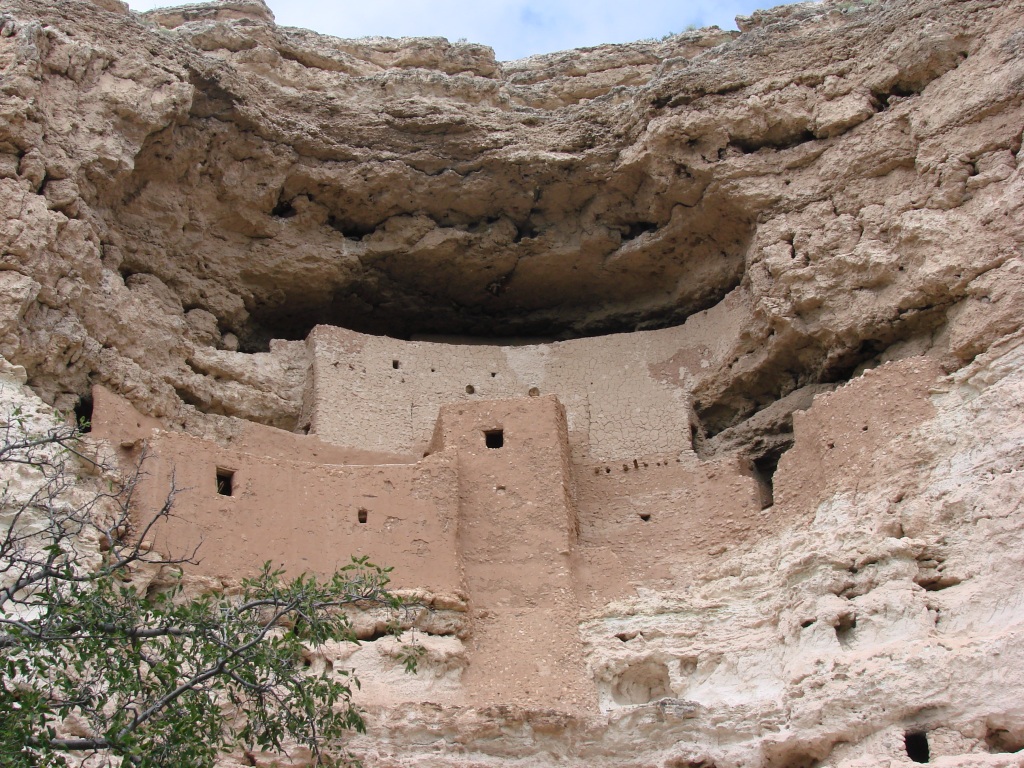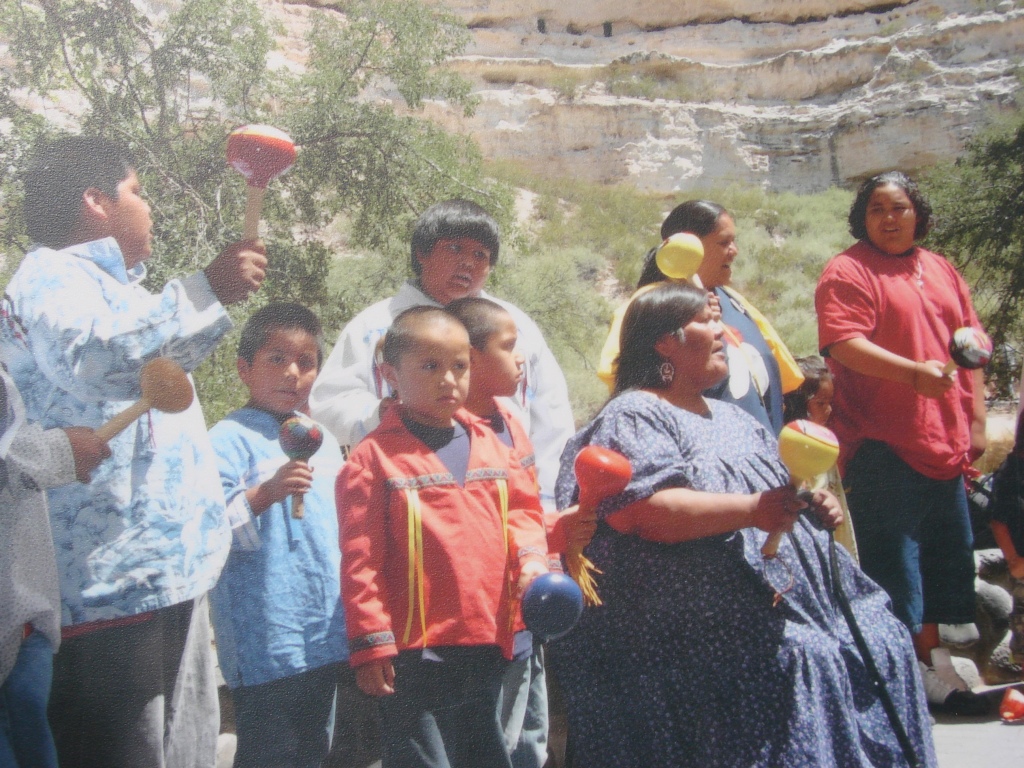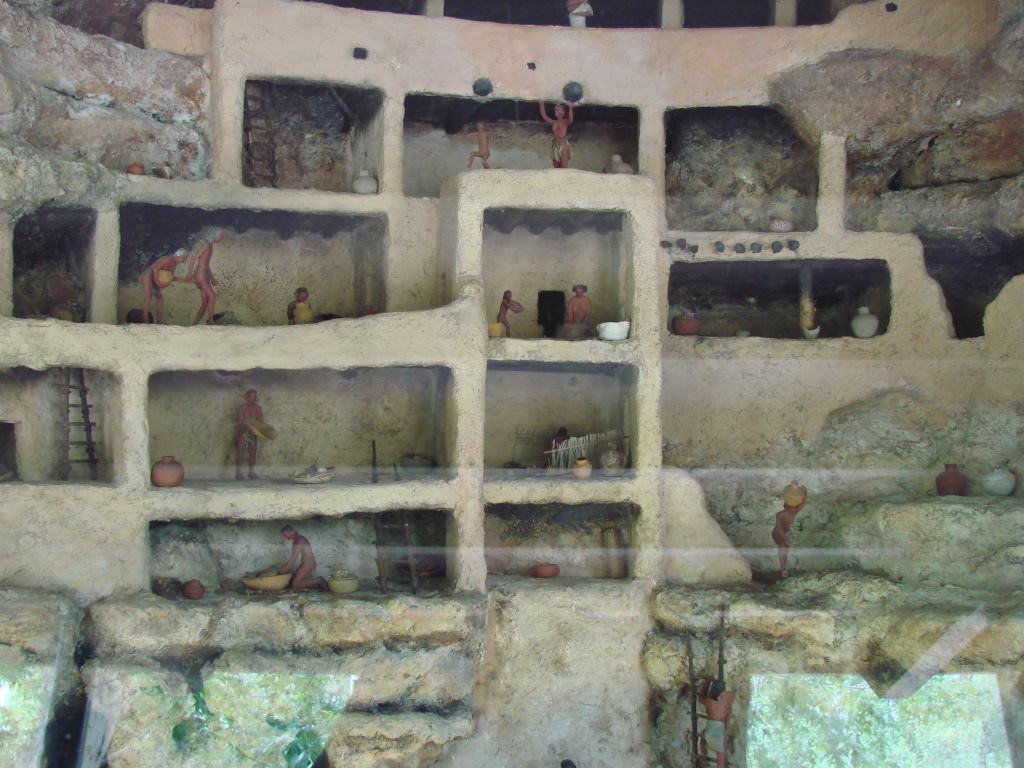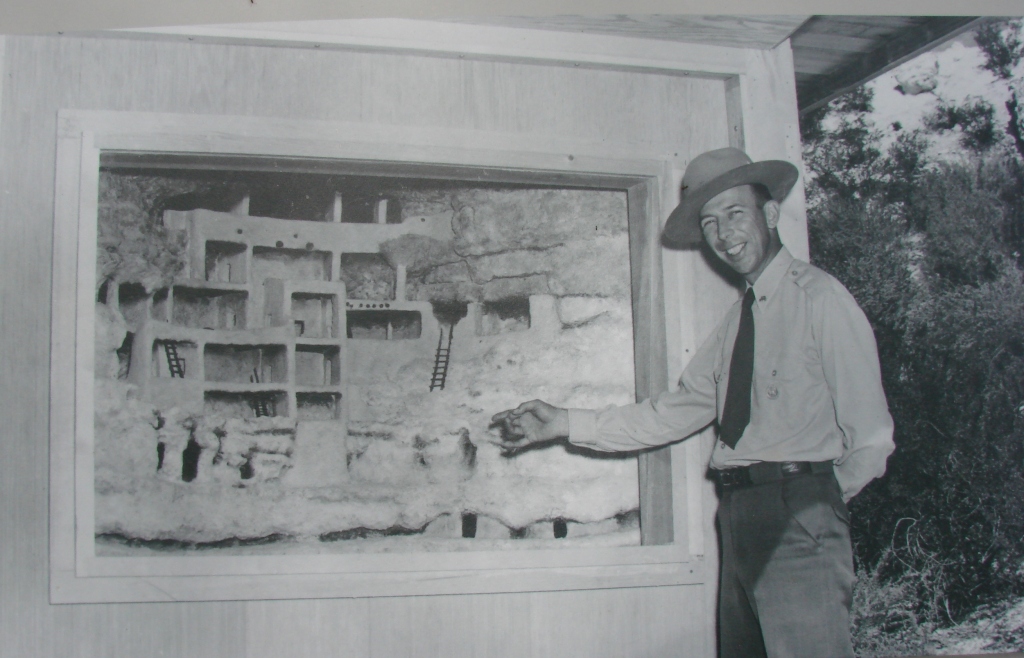
Montezuma Castle National Monument from a distance
I highly encourage any avid traveler interested in cultural and heritage tourism to visit the Montezuma Castle National Monument, located about an hour North from Phoenix, Arizona. Today this wonderful place is considered a National Monument and a cultural asset worth preserving but that wasn’t always the case. Sometime in the recent past Montezuma Castle used to be a popular tourist destination where just about anyone could go inside the cliff dwelling and admire this well-made architecture without a thought or care given to the concept of preservation.

The last official guided tour inside the place was on October 1, 1951. Back then tourists could stand inside the cliff dwelling, wander the rooms and actually touch the inside walls. Needless to say all this unsupervised meandering took its toll on the Castle. I do have to say I think I was a bit disappointed at having to be content with watching from afar instead of being able to go inside and explore (responsibly of course). However, I am not surprised that poorly planned tourism and negligent resource administration, such is the case of most tourism development done in the past, prevents my generation and any future generations from thoroughly enjoying and learning about this wonderful cultural asset worth admiring.
Thanks to archeologists, preservationists, and technology, we have information about the tribe that once made this site their home, but there is still a lot of information that that was lost due to the severe deterioration this site was allowed to suffer. Archeologists excavated this site in the 1930s and were able to collect some degree of valuable information in the process. However, their investigations were not able to discern what led this interesting tribe –the Southern Sinagua– to carve this impressive structure into the face of the cliff, dwell here for a number of years before deciding to leave it all behind and migrate elsewhere. Park Rangers will tell you during a guided tour that no one knows exactly why the Southern Sinagua migrated away from their pueblos by the early 1400s. Some scholars theorize that it might have been overpopulation, depletion of resources, disease, conflicts within or between groups, climate change, or perhaps spiritual beliefs. The Hopi say that “their ancestors purposefully settled and left villages like Montezuma Castle for a very specific reason, one that involves the fulfillment of a spiritual covenant…”

Yavapai Bird Dancers and Gourd Dancers celebrating a centennial at the site
I guess it is comforting to know that the National Park Service realizing that people were going to be off-limits to this site, decided to create a model to help visitors visualize and interpret what the structure looks like inside. An informational plaque next to the diorama reads as follows:
“Created by the National Park Service’s Museum Laboratory in Washington, DC, this diorama offered a look at the interior of the Castle and ended the damaged caused by visitation and vandalism. Today the model still serves its initial purpose and acts as an artifact of the park’s history. It reminds us of the continual work to balance a meaningful experience for today’s visitors with preserving this place for people in the future…”
Honestly, it is hard for me to justify spending my money traveling to see wonderful places like Montezuma Castle only to find out that the place is closed to the public due to poor tourism planning or worse yet, lack of tourism planning. But hey, don’t worry! Here’s a replica of the structure so you can get an idea of the layout of the place. It is a painful reminder that what we don’t protect today we will lose in the near future.

NPS Informational Plaque

diorama depicting the inside of the cliff dwelling

According to UNESCO (United Nations Educational, Scientific and Cultural Organization), heritage and cultural assets, especially those inherited by indigenous tribes like the Chan Chan Archaeological Zone in Peru, are already in danger of being lost due to “…natural disasters, pollution, poaching, uncontrolled urbanization and unchecked tourist development…”
Nonetheless, one cannot help but admire the talented Southern Sinagua builders who cleverly decided to build their homes on the hilltops and cliff alcoves. Rather than migrate to a better place with more abundant water, the Sinagua stayed in the desert and made do with what they had in hand. Their example is a perfect illustration of Plato’s famous quote: “Necessity is the mother of all inventions.”
As I stood there looking up at the Montezuma Castle, I wondered what would become of places like this as well as some other renowned locations like Machu Picchu, the Mayan Ruins, Easter Islands Monoliths. Are we heading towards a future where all these places exist only in pictures and dioramas? Will our future generations be able to enjoy wonders like this firsthand? After all, isn’t one of the purposes of traveling a reason to engage the senses and expose them to new sensations? Pictures and dioramas serve a purpose but they fall short of encompassing the experiences of walking through these ancient places. No book or model can emulate what the air inside the Pyramids smells like, or the sounds that surround you while you stand next to the Inca ruins of Machu Picchu, or the sound your feet make as you walk through the Sistine Chapel. And those are experiences worth preserving, both for us and for those who will come after us.

visitors looking at the diorama behind a glass window
© Lizzeth Montejano and Aculturame, 2012-2022. Unauthorized use and/or duplication of this material without expressed and written permission from this blog’s author and/or owner is strictly prohibited. Excerpts and links may be used, provided that full and clear credit is given to Lizzeth Montejano and Aculturame with appropriate and specific direction to the original content.
If you are interested in any of my work (including pictures, text content, etc.) you can contact me at aculturame@gmail.com
If you would like to request permission to use any of my blog content please contact me at aculturame@gmail.com
Good discussion!
Thank you for reading my blog!
Unfortunate you traveled the distance but did not have a chance to see the real ‘Castle’. Sounds like quite the experience anyways.
Unfortunately tourists are no longer allowed to go inside the Castle, so I had to watch from afar and take pictures of a replica. This is what happens when tourism is not managed well.